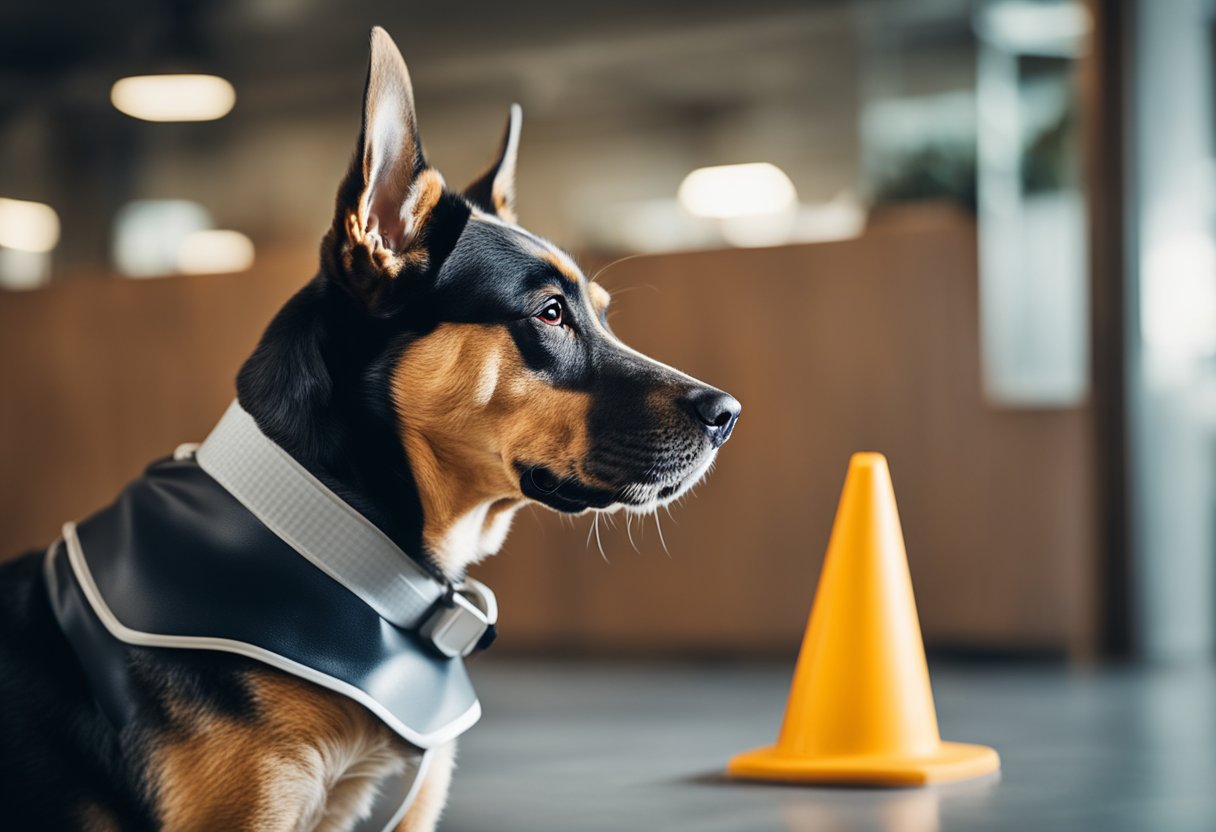How to Keep Your Dog Safe from Allergies ?
If you’re a dog owner, you know that your furry friend is more than just a pet. They’re a part of your family. And just like any other family member, you want to keep them safe and healthy. One of the most common health issues that dogs face is allergies. Allergies can cause a range of symptoms, from itching and sneezing to more serious reactions like anaphylaxis. In this article, we’ll go over some tips on how to keep your dog safe from the allergy problem.

The first step in keeping your dog safe from allergies is identifying the allergens that trigger their symptoms. This can be done through a blood test or a skin test, which can help determine what your dog is allergic to. Once you know what your dog is allergic to, you can take steps to avoid those allergens.
Preventive measures and safety are also crucial in keeping your dog safe from allergies. This includes things like keeping your home clean, using hypoallergenic bedding, and avoiding certain foods or treats that may trigger your dog’s allergies. Regular visits to the vet can also help ensure that your dog is healthy and that any allergies are properly managed. By taking these steps, you can help keep your furry friend safe and healthy for years to come.
Key Takeaways
- Identifying the allergens that trigger your dog’s symptoms is the first step in keeping them safe from allergies.
- Preventive measures and safety, such as keeping your home clean and using hypoallergenic bedding, can help reduce your dog’s exposure to allergens.
- Regular vet visits are important to ensure that your dog is healthy and that any allergies are properly managed.
Identifying Allergens

If you suspect your dog has allergies, it is important to identify the allergen(s) causing the problem. Here are some common allergens that may affect your furry friend:
Common Environmental Allergens
Environmental allergens are substances found in the environment that cause allergies in dogs. They include:
- Pollen: Pollen from trees, grasses, and weeds can cause allergies in dogs, just like in humans.
- Mold and Mildew: Mold and mildew can grow in damp areas, such as basements, bathrooms, and kitchens. Dogs can be allergic to the spores that are released into the air.
- Dust Mites: Dust mites are tiny insects that live in house dust. They can cause allergies in dogs when inhaled or when they come into contact with the skin.
- Fleas: Fleas are a common cause of allergies in dogs. Dogs can be allergic to the saliva of the flea, which causes an itchy, uncomfortable reaction.
Food Allergens in Dogs
Food allergies are caused by certain proteins in your dog’s food. The most common food allergens in dogs include:
- Beef
- Chicken
- Dairy
- Eggs
- Wheat
- Soy
If you suspect your dog has a food allergy, you may need to switch to a different type of food or feed them a hypoallergenic diet.
Seasonal Allergies and Dogs
Seasonal allergies are caused by allergens that are present during certain times of the year. Common seasonal allergens include:
- Pollen: Pollen from trees, grasses, and weeds can cause seasonal allergies in dogs.
- Mold and Mildew: Mold and mildew can grow more easily during humid weather, which can cause allergies in dogs.
- Insects: Mosquitoes, ticks, and other insects can cause allergies in dogs during the warmer months.
By identifying the allergen(s) causing your dog’s allergies, you can take steps to reduce their exposure and keep them safe and comfortable. Consult with your veterinarian to determine the best course of action for your furry friend.
Preventive Measures and Safety

As a dog owner, it is important to take preventive measures to keep your furry friend safe from allergens. Here are some ways you can create a safe environment for your dog:
Creating an Allergen-Free Environment
One of the most important things you can do is to keep your dog’s environment clean. Regularly vacuuming your home, washing your dog’s bed and blankets, and keeping your dog away from areas with high pollen counts can help reduce allergens in the air. You can also create a dog-free zone in your home, such as your bedroom, to provide a safe haven for allergy sufferers.
Choosing Hypoallergenic Dog Products
Choosing hypoallergenic dog products can also help reduce the risk of allergies. Look for dog food that is free from common allergens such as wheat, corn, and soy. You can also choose dog shampoo and grooming products that are specifically formulated for dogs with sensitive skin.
Regular Health Check-Ups
Regular health check-ups with your veterinarian can also help keep your dog safe from allergies. Your vet can help identify any potential allergens that your dog may be exposed to and provide recommendations for treatment. They can also help identify any underlying health issues that may be contributing to your dog’s allergies.
By taking these preventive measures, you can help keep your dog safe from allergies and provide a healthy and happy environment for your furry friend.
Resources

Keeping your dog safe from allergies can be a challenging task, but with the right resources, you can make it easier. Here are some helpful resources to help you stay informed and protect your furry friend.
1. American Kennel Club (AKC)
The AKC is a great resource for dog owners. They have a comprehensive guide on types of dog allergies and how to treat them. They also provide information on the signs of allergies and how to identify them. You can find all this information on their website.
2. Rover
Rover is another great resource for dog owners. They have a blog post that provides tips for controlling pet allergies. One of the tips is to create dog-free zones in your home. They also recommend using a specially formulated laundry detergent to remove allergens from pet beds. You can find more tips like these on their website.
3. PetMD
PetMD is a trusted source of information on pet health and wellness. They have an article that provides an overview of dog allergies, including the different types of allergies and their symptoms. They also provide information on how to treat allergies and prevent them from occurring. You can find this article on their website.
4. Allergy and Asthma Foundation of America (AAFA)
The AAFA is a nonprofit organization that provides resources and support for people with allergies and asthma. They have a section on their website dedicated to pet allergies. This section provides information on how to manage pet allergies, including tips on cleaning and grooming your pet. You can find this information on their website.
By using these resources, you can stay informed and take the necessary steps to protect your dog from allergies. Remember to always consult with your veterinarian if you suspect your dog has an allergy or if you have any concerns about their health.
Conclusion

In conclusion, keeping your dog safe from allergies requires a combination of preventive measures and prompt treatment. Regular grooming, including brushing and bathing, can help reduce allergens on your dog’s skin and coat. Using a hypoallergenic shampoo and conditioner can also be helpful in managing your dog’s allergies.
It is important to pay attention to your dog’s diet as well. Feeding your dog a high-quality, balanced diet can help boost their immune system and reduce the risk of allergies. Avoiding foods that commonly trigger allergies in dogs, such as grains and dairy, can also be beneficial.
If you suspect that your dog has allergies, it is important to consult with your veterinarian. They can help diagnose the type of allergy and recommend appropriate treatment options, such as antihistamines, immunotherapy, or prescription medication.
Remember to keep your home clean and free of allergens, such as dust and mold. Use air purifiers and vacuum regularly to reduce the amount of allergens in your home. If your dog has outdoor allergies, try to limit their exposure to pollen and other outdoor allergens.
By taking these steps, you can help keep your dog safe and comfortable, even in the face of allergies.
Frequently Asked Questions

What immediate steps can I take to alleviate my dog’s allergy symptoms?
If your dog is experiencing allergy symptoms, there are a few immediate steps you can take to alleviate their discomfort. First, make sure to bathe your dog regularly to remove any allergens from their skin and coat. You can also use a damp cloth to wipe down your dog’s paws and belly after they come inside to remove any pollen or other allergens they may have picked up outside. Additionally, you can give your dog an over-the-counter antihistamine to help reduce their symptoms. However, it’s important to consult with your veterinarian before giving your dog any medication.
What natural remedies are effective for managing dog allergies?
There are several natural remedies that can be effective for managing dog allergies. For example, adding omega-3 fatty acids to your dog’s diet can help reduce inflammation and improve skin health. You can also try giving your dog a probiotic supplement to support their immune system and reduce allergy symptoms. Other natural remedies, such as herbal supplements and acupuncture, may also be helpful, but it’s important to consult with your veterinarian before trying any new treatments.
What treatments are available for dogs with environmental allergies?
If your dog has environmental allergies, there are several treatments that may be effective. Your veterinarian may recommend medications such as corticosteroids or antihistamines to help manage your dog’s symptoms. Immunotherapy, which involves exposing your dog to small amounts of allergens over time to build up their immunity, may also be an option. Additionally, keeping your home clean and free of allergens can help reduce your dog’s exposure to triggers.
How can I prevent my dog from developing allergic reactions?
While it may not be possible to completely prevent your dog from developing allergies, there are some steps you can take to reduce their risk. For example, feeding your dog a high-quality diet and maintaining a healthy weight can help support their immune system. Additionally, keeping your home clean and free of dust, mold, and other allergens can help reduce your dog’s exposure to triggers. Finally, avoiding over-vaccination and unnecessary medications can also help reduce your dog’s risk of developing allergies.
What strategies can help build immunity against dog allergies?
There are several strategies that can help build immunity against dog allergies. For example, exposing your dog to a variety of environments and people can help strengthen their immune system. Additionally, feeding your dog a healthy diet that includes probiotics and omega-3 fatty acids can help support their immune system. Regular exercise and stress reduction techniques, such as massage or acupuncture, may also be helpful.
How can I minimize the risk of skin allergies in my dog?
To minimize the risk of skin allergies in your dog, it’s important to keep their skin and coat healthy. Regular grooming, including brushing and bathing, can help remove allergens and keep your dog’s skin clean and healthy. Feeding your dog a high-quality diet that includes essential fatty acids can also help support skin health. Additionally, avoiding harsh chemicals and fragrances in your home and on your dog’s skin can help reduce the risk of skin irritation and allergies.
